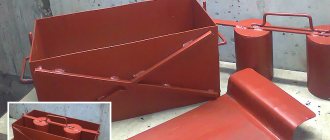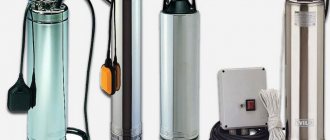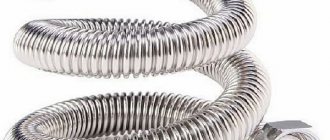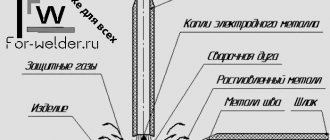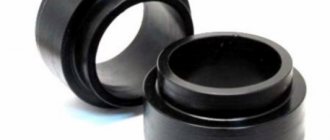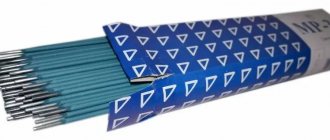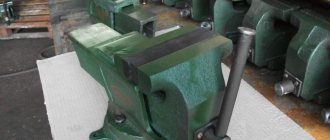The article will discuss how molds for garden figures can help you organize your own profitable business, where you need to start producing garden decorations, what equipment to purchase, what material is best to choose for the work. Photos and videos will clearly demonstrate existing capabilities.
Garden figurines in landscape design Source pinterest.ch
How to organize the production of garden figures
Garden figurines are one of the elements of landscape design. Today they are very popular among gardeners who carry out landscaping in the local area. With their help, you can create a complete appearance of your landscape design, skillfully disguise unsightly technical components (well hatches, pipeline valves, not uprooted tree stumps), and create a certain mood. It is difficult to hold back a smile if you are greeted at the entrance to the house by a very funny, mischievous gnome holding a basket or a lit lantern in his hands.
Today, in almost every city there is one enterprise that produces garden figurines. But even despite this, according to experts, this niche for business is still free. There is not much competition in the market, interest in this type of product from buyers is growing from year to year, so you can open your own business and produce garden figurines.
Production of garden figurines Source ostwest.su
To do this, you need to register an enterprise, rent premises, purchase equipment and organize an advertising campaign. The technology for producing garden figures is a simple process from a technological point of view. Its implementation does not require specific professional knowledge and skills. It consists of several stages. You will need:
- prepare the mixture;
- pour it into ready-made molds (molds for small garden figures for large and medium-sized architectural elements);
- remove the finished product after it dries well inside the mold;
- prime and paint the blanks obtained in this way .
In order to establish the production process, it is necessary to purchase several dozen different types of molds.
Molds for garden figurines Source samtex.polfirms.pl
Conditions of education
We teach artistic ceramics in Moscow 6 days a week from Monday to Saturday according to the selected schedule
You can apply for training at any convenient time on our website, but first pay attention to the conditions:
- Upon registration, you must pay 50% of the tuition fee. The remaining amount is due during the first two weeks of training.
- The duration of the basic course is 72 academic hours
. - Cost 48,000 rubles.
- Group size – up to 4 people
. - The document issued after successful completion of the basic course is a Certificate of profession “Manufacturer of ceramic art products”
with the assignment of 2-3 categories. - To register, have with you: passport, photograph 3x4 cm.
Classes take place in a workshop using pottery equipment and tools, and modern kilns. The training course for ceramic potters includes theoretical and practical parts, which are included in the plan of each lesson. During the course, each student will create decorative items, ceramic tiles and tableware using different techniques for working with clay. Mentors will pay maximum attention to technologies that are of most interest to a particular group. All work, except the thesis, will remain with the student. One of the works completed by the student during the course will be presented for defense as a thesis. Based on the results of the defense, we will issue a qualification document. For those who want to learn how to professionally manufacture a specific type of product, we organize individual and group courses at an advanced level.
Apply for training now! We will contact you, answer your questions, and sign you up for a course with a suitable training mode.
Find out the start dates of courses
Course leader and teachers
Pimenov Sergey Viktorovich
Teacher of the course “Art Ceramics”
Pimenov Sergey Viktorovich
Artist, ceramist-potter. Studied at MGHPA named after. Stroganov at the faculty of monumental and decorative painting. For 15 years he was engaged in applied design (art forging, casting, mosaic, stained glass, furniture, staircase, interior design). He worked in the production of stove tiles and wall tiles. Since 2021 she has been working with clay - pottery, modeling, decor. Teaches at the school-studio of Sergei Akentyev from (the village of Gzhel brick factory). Member of the Creative Union of Potters Alexandra Poverina.
Zvyagina Veronika Yurievna
Teacher of the course "Pottery"
Zvyagina Veronika Yurievna
Ceramic artist, potter, participant in creative exhibitions and ceramic festivals. More than 10 years of experience working with clay. 10 years teaching experience. Head of the creative project “Making” Teacher of the course “Pottery” at the Russian Academy of Crafts.
Sirbu Alexandra Nikolaevna
Teacher of the distance course "Ceramics and pottery"
Sirbu Alexandra Nikolaevna
Education: — AHPK im. V.M. Vasnetsov, majoring in decorative and applied arts, Moscow State Academy of Arts and Sciences named after. S.G. Stroganov with a degree in artistic ceramics, Institute of Problems of Contemporary Art “New Artistic Strategies”. Since 2014, she has been a regular participant in Russian and international exhibitions, a participant in international biennales, and a laureate of a number of Russian and international competitions. Since 2022, member of the International Federation of Artists and the Creative Union of Artists of Russia. Conducts theoretical and practical classes, long courses, master classes for children and adults. 7 years of teaching experience. 15 years of artistic practice experience.
Types of forms
The production of garden figures without the use of molds is impossible. It is they who help create the basis, which can then be modified and decorated, brought to a commercial appearance. Today on sale you can find molds made of different materials. Each variety has its own advantages and disadvantages.
Plaster molds
These are the most affordable molds. Their cost price is equal to the cost of the material spent. You can buy ready-made samples in specialized stores, or you can make them yourself. For this you will need formwork. It can be made using thick cardboard. The joints are secured with tape. If there are remnants of chipboard and furniture confirmats in the house, they will also make good formwork.
Before pouring plaster, the figurine is generously coated with liquid soap. Then you need to let it dry. Using a similar procedure, it is possible to create a protective separating layer on the base, which will then allow the garden figurine to be removed from the frozen form. The base is placed inside the formwork, and a liquid solution prepared from gypsum powder and water is poured onto it. Its consistency should be like thin sour cream.
Formwork for pouring gypsum, made from remnants of chipboard Source restaurarconservar.com
Afterwards, you need to wait for the solution to completely harden. Then the mold must be carefully cut in half with a thin hacksaw and the product removed. Experts recommend immediately coating the resulting relief inside the workpiece with a thin layer of epoxy glue. And let it all dry thoroughly again. The mold is ready to use. In order to make a copy, you need to generously coat the inside of the mold with liquid soap, let it dry well, after which you can pour liquid plaster inside.
Attention! Making garden figures using plaster molds is a very labor-intensive process. The molds themselves weigh a lot, after pouring they become even heavier; you will have to put a lot of effort into removing the blank from the mold. If moved carelessly, the product can break, and then all the work goes down the drain.
See also: Catalog of companies that specialize in landscape design of sites.
Polymer forms
They are made of fiberglass. The finished samples weigh very little, but still the polymer is also a brittle material. Practice shows that it can withstand a limited number of pours. Many manufacturers purchase polymer molds to make plaster copies. This helps optimize costs and significantly simplify the process of making molds for filling garden figures yourself.
Polymer molds for filling garden figures Source pabrashu.info
Metal molds
They are used extremely rarely today. And all because working with such basics is very time-consuming and effort-consuming. The result is a product with a lot of sagging remaining on its surface. They have to be additionally cleaned, which increases the production time of one product.
Silicone molds
When silicone appeared, many problems in the production of garden figures were solved by themselves. Molds with a metal base, inside of which there are two layers of soft, dense silicone, have appeared on sale. The two halves of the mold are connected to each other using bolts. There is a place at the base for pouring liquid composition.
The mold has one design feature: one part overlaps the second part. This helps to end up with a figure that does not have a swell in the center. After pouring, the mold does not need to be constantly shaken, allowing the liquid gypsum or polymer to be evenly redistributed. The properties of silicone are such that you can do without this procedure. No cavities are formed on the surface of the finished product; there are no voids inside. This means that the figure will last much longer.
Silicone mold for making garden decor Source moysadiogorod.ru
Slip casting: subtleties, tricks, techniques
Are you starting to cast?
This means that the following will be on the table in front of you.
1. Plex board or modeling board.
2. A jar for porcelain scraps (then we will recycle them back into slip).
3. Clean sponge (wet, wrung out).
4. A set of tools (cutter, spatula, calibrator, awl with ball, special tool for a specific product).
5. Brushes of different sizes.
6. A bucket of warm water.
7. A container of finished slip, mixed and filtered through a fine sieve.
8. And, of course, the form.
The form should be dried, but not too dry. The dry form is warm to the touch, the undried form is cold.
It seems obvious, but many suffer. The amount of casting slip should be proportionate to the task. For casting small items, 0.5 cups with a spout are sufficient. Running out of slip in the glass? Top up from a bucket (do not work with a heavy bucket, lifting it to shoulder height).
Pour quickly in a thin continuous stream (without stopping).
If the mold has a large sprue, then there are no problems. A small sprue (5-8 mm) requires a perfectly thin, thread-like jet so as not to clog the hole. This requires an eye and skill. As an exercise, you can pour the slip from glass to glass.
You need to pour on the bottom of the mold, not on the wall. Otherwise, vertical streaks may appear on the product, which are visible even after firing. Example: if you are pouring the shape of a doll's leg, you need to aim for the heel, otherwise (see above).
Why do you need to pour quickly? When braking and pausing, horizontal stripes remain on the product, which will be visible on the biscuit, no matter how much they are washed out or rubbed.
Slip drain. We advise inexperienced pourers not to pour 2 products at the same time. In other words, they filled the product, drained it, then moved on to the next one.
Porcelain can thicken from simply standing, so before pouring, you need to give activity to the mass poured into the mold, for example, by rotating, shaking slightly, shaking the mold a little.
In molds with a small sprue, before draining, use a thin spatula to clear the drain hole.
Mistake: many people cut out the crater of the sprue, but do not touch the hole itself, for fear of damaging the product. The sprue hole must be free! For this purpose, you can use cocktail straws of different diameters.
Method: insert a piece of tube, preferably a corrugated one, turn it over the drain glass and blow the slip out of the mold. All the slip must flow out; special attention is required for shapes of complex configurations, with corners and undercuts.
When blowing, a funny sound may be heard, but the result is more important.
Drain the slip. Throw the tube into a bucket of water. Without turning the mold over, place it with the sprue down on a plastic table/board.
Typical mistake! After draining the slip, many people turn the mold over and put it in its original position. This cannot be done: such manipulations cause the slip to flow down the walls of the product and leave ugly streaks, as a result of which the thickness of the product inside varies. During firing, due to the difference in thickness, tension may arise, cracks may appear along the streaks, and the product will be rejected.
The same danger is fraught with incomplete drainage of the slip from the mold. Therefore, when draining complex shapes, with corners and undercuts, it is necessary to lightly shake the mold at different angles while draining the slip.
Recommendation. Is this your first time pouring into a mold with a complex configuration? The first casting usually goes to waste, or more precisely, to a scrap bucket. Therefore, do not rush to take it out, let it sit for an hour or more, it will pick up the remaining grease and chips of plaster. Having taken out such a casting, take the time to cut it in different places and examine whether there are any drips or differences in thickness, and based on these observations, adjust further work with this form.
Based on the “first pancake”, an experienced caster can conclude that it is necessary to replace some pieces of the mold!
Enough for today. We will devote a separate material to the nuances of disassembling the mold and working with the casting.
Features of choosing material for the production of garden decorations
Figures for the garden can be cast from plaster, concrete and polystone. Products made from gypsum sell out faster. They have the lowest price. Therefore, organizing the production of such products is a very simple process that does not require large material investments. A kilogram of gypsum costs from 40 rubles. It produces very fragile products that are not resistant to any mechanical loads. They absorb moisture. The service life of such a garden decoration is one season, but consumer demand for such products is still quite high, so you can safely work in the designated direction.
Garden figurines made of plaster Source svarka-doka.ru
Application area of gypsum casting
Gypsum casting is used both at industrial enterprises for the manufacture of interior decoration parts, and in designer workshops. Craftsmen cast a very wide range of plaster
- Author's interior decor elements
- Figurines and even large statues, up to models for subsequent metal casting
- Small decorations
- Toys
- Parts for scale models of equipment
Small plaster jewelry
Plaster toys Plaster figurines
Author's interior decor elements
The scope of application is not limited to this list. Craftsmen are coming up with more and more new areas of application for gypsum casting - wherever it is necessary to create parts with complex surfaces and relief, and the requirements for strength and wear resistance are not critical.
Video description
The video shows how you can make a figurine from plaster by pouring the mixture into a silicone mold:
The described choice has one significant drawback. The production of garden figures from polystone is impossible without the use of synthetic pigments and polyester resins. They contain styrene, a dangerous chemical compound. Therefore, those who choose such technology for the production of garden figurines will need to be more careful about the organization of the labor process. For its implementation, only those premises that are located five hundred meters from residential buildings are suitable; good ventilation must be installed inside, workers must wear respirators and other protective equipment.
Polystone figures with a lot of small details Source vsegdasvami.ru
Important ! There are no local raw materials on the domestic market. It has to be imported from abroad, so the cost of polystone figurines is very high.
Concrete garden figurines are also in good demand among buyers. They are manufactured using components that are quite affordable. These are sand, cement, pigments and plasticizers. All dry ingredients are mixed into the solution using water, and the solution is poured into special molds. After hardening, the result is very durable products that can last in the garden for decades. They have one significant drawback - heavy weight. It will be difficult to move the figurine from place to place if desired. Often, special equipment must be used to transport and install such sculptures.
Concrete watchdog figurine Source compras.sharemedoc.com
The next stage is creating a gypsum mixture for the bed
To do this, mix PVA glue with water, which is then added to the plaster. A little cement is added there to give additional strength. As for the glue, it plays the role of a plasticizer.
We pour the resulting gypsum mixture into our formwork onto the product.
During this process, you should also coat all pores with a brush. When pouring the gypsum mixture into the formwork, the resulting layers should be leveled with a spatula.
Generalization on the topic
The business described is a wide field for activity. It can bring good profits if it is constantly developed. This must be done by involving professional artists and sculptors. The cost of exclusive works is much higher than products made according to standard sketches. Garden decorations that glow in the dark can interest buyers. And if you open a multidisciplinary company and add to the staff employees involved in landscape design, providing services for the care of the created landscaping, profits will only increase.
What will you learn in the art ceramics course?
- Distinguish between types of ceramics, evaluate the possibilities of their manufacture from available materials;
- Select raw materials for creating ceramic products, prepare molding mass and glazes for use, use fluxes and binders;
- Make models for ceramic tiles, molds for slip casting;
- Correctly use the kiln for firing ceramic products;
- Work in 7 different techniques: hand sculpting, plastic technique, circular molding, braiding, kneading into a finished form, slip casting, pottery;
- Working on a potter's wheel; We have 12 academic hours allocated for this; You will master basic skills and, if desired, can study the craft in more depth.
With us you will learn ceramics and pottery, master the basic methods of working with clay under the guidance of professional ceramic artists
. Create with your own hands from clay unique works of art, dazzling unusual jewelry, or simply useful household items. Admire the result of your work and get satisfaction from it. You will spend your time usefully, and if you wish, take a confident step towards opening your own business.
Our masters of artistic ceramics will share the secrets of their craft, find the seeds of talent in each of you and help them grow, turn into a powerful creative force that turns shapeless clay masses into real masterpieces that famous collectors will begin to hunt for.
Of course, we will not ignore the artistic processing of ceramics with different types of glazes
. Let's consider the basic and additional methods of decorating ceramic products.
